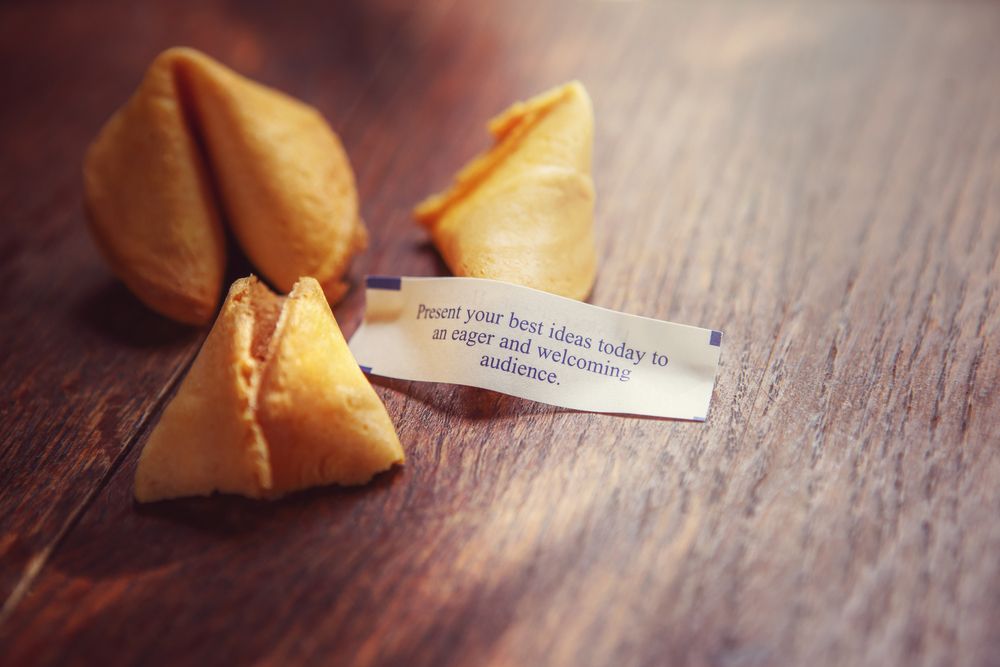Join 40,000+ sales and marketing pros who receive our weekly newsletter.
Get the most relevant, actionable digital sales and marketing insights you need to make smarter decisions faster... all in under five minutes.
What’s Your “Fortune?" How to Master A Brand Story Like Bernadette Jiwa

May 28, 2015

 The best fortune cookie I’ve ever gotten read, “The best way to stay healthy is to eat more Chinese food.”
The best fortune cookie I’ve ever gotten read, “The best way to stay healthy is to eat more Chinese food.”
No seriously. That happened. I still have it at home.
In her book, The Fortune Cookie Principle, best-selling author and marketer, Bernadette Jiwa, argues that the only reason people want fortune cookies is precisely for insightful (or in this case, memorable) “fortunes” like mine.
“...[W]e’re not buying that cookie or the taste of it,” she explains. “We’re buying the little piece of paper that’s inside and the feeling it creates inside of us… that little bit of magic, that little bit of joy in the moment.”
That moment is a part of your brand’s story. It’s what sets you apart and makes people care about your idea or the product you have to offer (and apparently crave cookies.)
In a recent interview, Jiwa sat down with our own, John Bonini to discuss this idea and how organizations can use it to make people fall in love with their brand. Here’s how you can get your brand romance started according to Bernadette.
What is a Brand Story?
As she discusses, brand storytelling extends far beyond sharing the literal history of your organization. Many marketers get caught up in the narrative connotation of the term, but in reality, the scope of brand storytelling is much larger than that.
“It’s everything,” she explains. “It’s how you answer the phone, design, the font on your website, how you name things, your team…Sometimes it’s not even what you say, it’s what your customers say about you.”
Your brand story (or “fortune” as Bernadette would see it) is how you manifest the values you promote and the emotions you want to evoke through your business. It is, in many ways, your organization’s personality, and like with people, no two brand personalities are alike.
In a market flooded with copycats and ever-lowering barriers to entry, it is this unique “fortune” that can very often be the deciding factor in your audience’s purchase decision.
How to Craft Your “Fortune”
While it may seem like an elusive and ambiguous concept, crafting your brand’s “fortune” is quite the opposite. You really only need to do two things: Focus on your end user and Look for the human connection.
1. Focus On Your End-User
HubSpot has a saying, SFTC: solve for the customer. It basically means that everything you do as a company should come back to your buyer persona; solving one of their pain points or achieving something for them.
Like everything in your Inbound strategy, this is where your brand story should begin as well.
“Start with why you’re in this business. Think of the people you serve….Just give a damn about [them],” explains Jiwa.
If you can identify what it is that your buyer persona wants and needs, you will have a solid foundation of what it is your brand should stand for and the unique experiences it should offer, if it doesn’t already.
Start by making sure that you have thoroughly researched and documented buyer personas for your organization including:
- General Demographics
- Career Background
- Common Goals
- Common Pain Points
- Hobbies and Interests
With this knowledge in hand, you will be able better equipped to shape your brand and story in order to appeal best to them.
2. Look for the Human Connection
“When you think about a story, it’s about human connection,” explains Jiwa. Even if your organization is B2B, your bread and butter comes back to working with and for people and appealing to their human needs and sentiments.
Utility aside, what values and emotions drive your buyer? What makes them happy? What do they aspire to? What little-extra-something would give your product the edge over your competitors?
With 64% of people reporting shared values as the reason they remain loyal to a brand, it is appealing to these desires that will make your brand relatable and in turn make your audience feel connected enough to stick around.
So take your buyer personas from above and start searching for that magic touch. Dive deeper into what would bring them to you in the first place and explore ways to forge that personal connection long term.
Putting it All Together
Overall, people don’t want to buy ordinary commodities that merely appeal to them as users. They want products that appeal to them on a more personal, human level as well.
For example, take Jiwa’s story about “New York City Garbage”. In 2001, Justin Gignac, an artist and entrepreneur, began selling encased garbage from the streets of New York City for about $50 a case.
People knew they were literally paying for trash, but they didn’t care. They were buying an “authentic” piece of New York.
The absurdity of the offer embodied the eccentricity of the city that people loved and it gave them a story to tell their friends (which Jiwa calls “the gift that keeps on giving.”) With Gignac’s creativity, the cube wasn’t just a few pieces of trash anymore, it was a unique tribute to Big Apple. This is the story and meaning you should aspire to.
When it comes to your brand story, sit down with your team and explore how you can combine the needs of your end-user with the humanity of offering to produce a unique experience like Gignac.
As Jiwa says, if you can add this kind of emotional meaning behind your product or service, you will have a valuable brand that people will not only pay for, but care about.
Free Assessment: